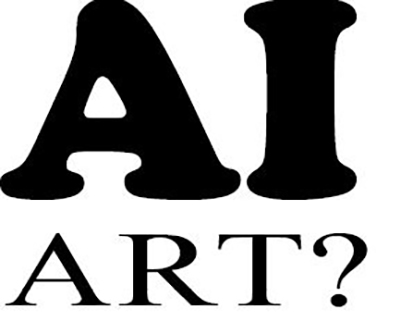Artificial intelligence poses problems for artists
June 2, 2023
As time progresses, the innovation of new styles and techniques emerge which people use to express themselves, and a new way they are accomplishing this is by Artificial Intelligence “art.”
AI art is where a person types phrases and words into an AI generator and the computer generates an image. They are coded by engineers to take inspiration from already existing ideas and images all over the internet.
But can this be considered art?
Art is defined as “the expression or application of human creative skill and imagination… producing… beauty or emotional power,” according to Oxford Languages.
AI art does not meet this definition, and does not depict any creative skill and imagination. It works by using already existing photos and paintings on the Internet and merging them into one photo after a person types in a few words. There is no creativity in the process.
While it could possibly be argued that man-made art also takes inspiration from around them when created, and from other artists, most pieces convey a theme or emotion and sentiment. While these images can invoke emotion, it cannot be created with that intent. It cannot tell a story.
Art is meant to invoke emotion and give the viewer something to relate to or feel: producing beauty or emotional power.
AI can create aesthetically pleasing images, yet they have no story. AI cannot take subjects around them and capture their emotions. To be able to create an emotionally powerful story, one must have emotions.
“To evoke in oneself a feeling one has experienced … this is the activity of art,” Leo Tolstoy states. The AI generator has not experienced any feeling to evoke itself in.
More so, these AI images are not even originaly, being trained by using many images on the Internet, even copyrighted ones.
In a generator called Lensa AI, when conjuring an image often a signature of a real artist is visible, proving that these images are stolen. Artists do not get compensated for their artwork, spawning a debate on the ethics of this.
This is the most significant issue and concern with AI art. This theft of years of skill and hours of work from traditional artists. While many argue that artists being angry at AI art is considered “gatekeeping,” and is similar to the backlash that was directed towards photographers when they emerged, it is much more than that.
A system called DDG may let artists opt out of their art being used, but asking permission should have been the first step.
Art is complex and thought provoking, deeper than the aesthetic images art is being reduced to. While generating AI images is fun, it takes away opportunities for traditional artists.
I believe that these digital images will never permanently replace traditional artists.
Traditional artists will find a way to adapt and overcome just like years ago when photography arose. When this happened the impressionist artists created portraits that cameras couldn’t. With technology making life easy, and creating in the years to come, hard work will become more appreciated.
The passion, skill, and beauty of an artist’s style can never be replaced.

